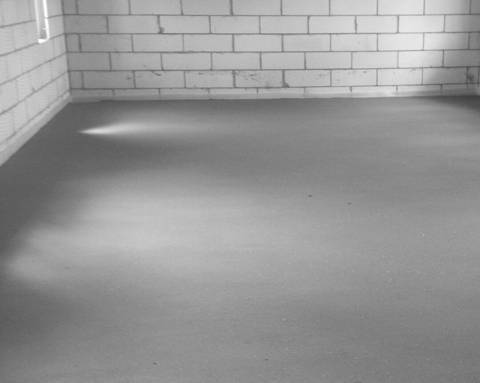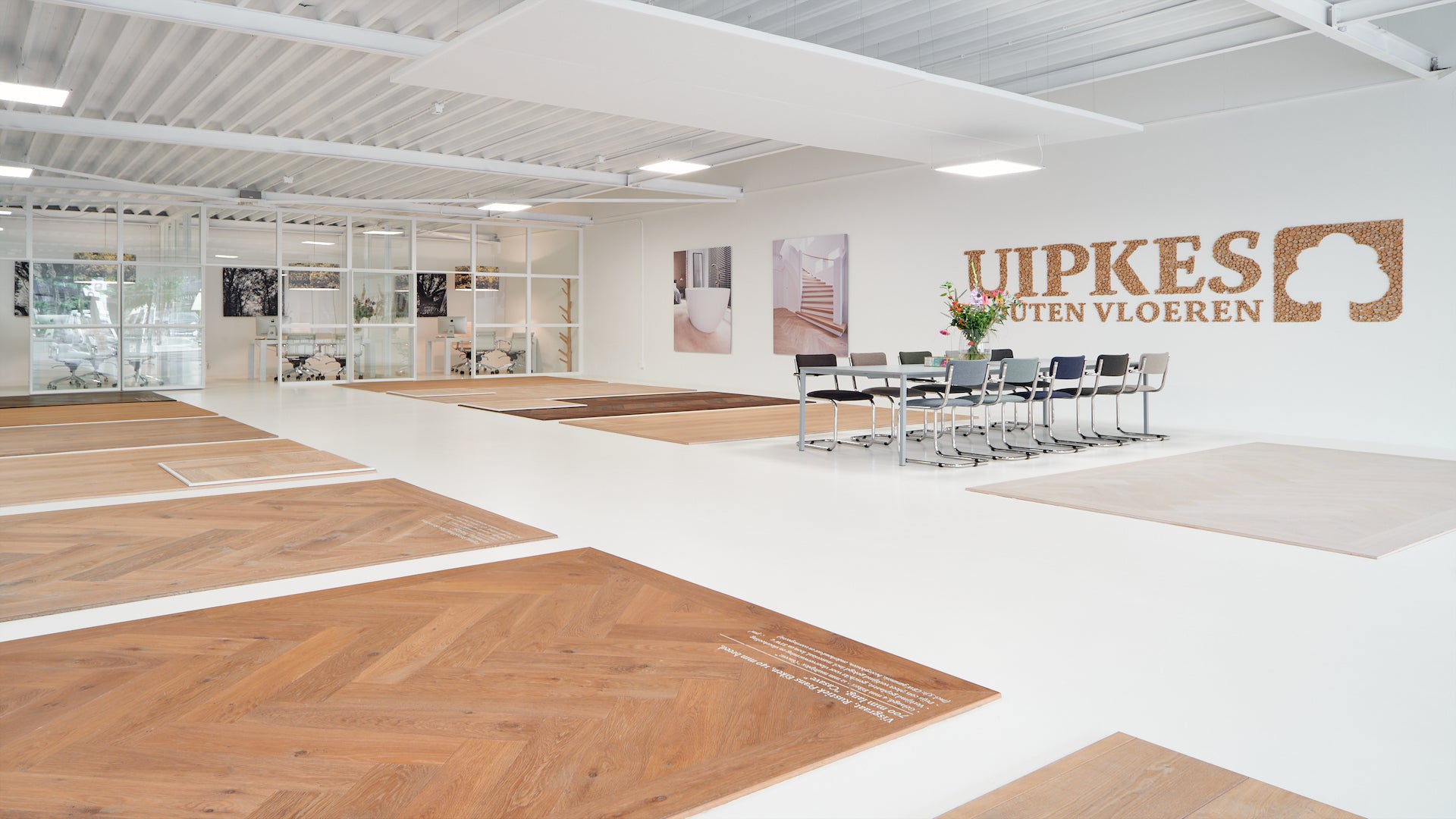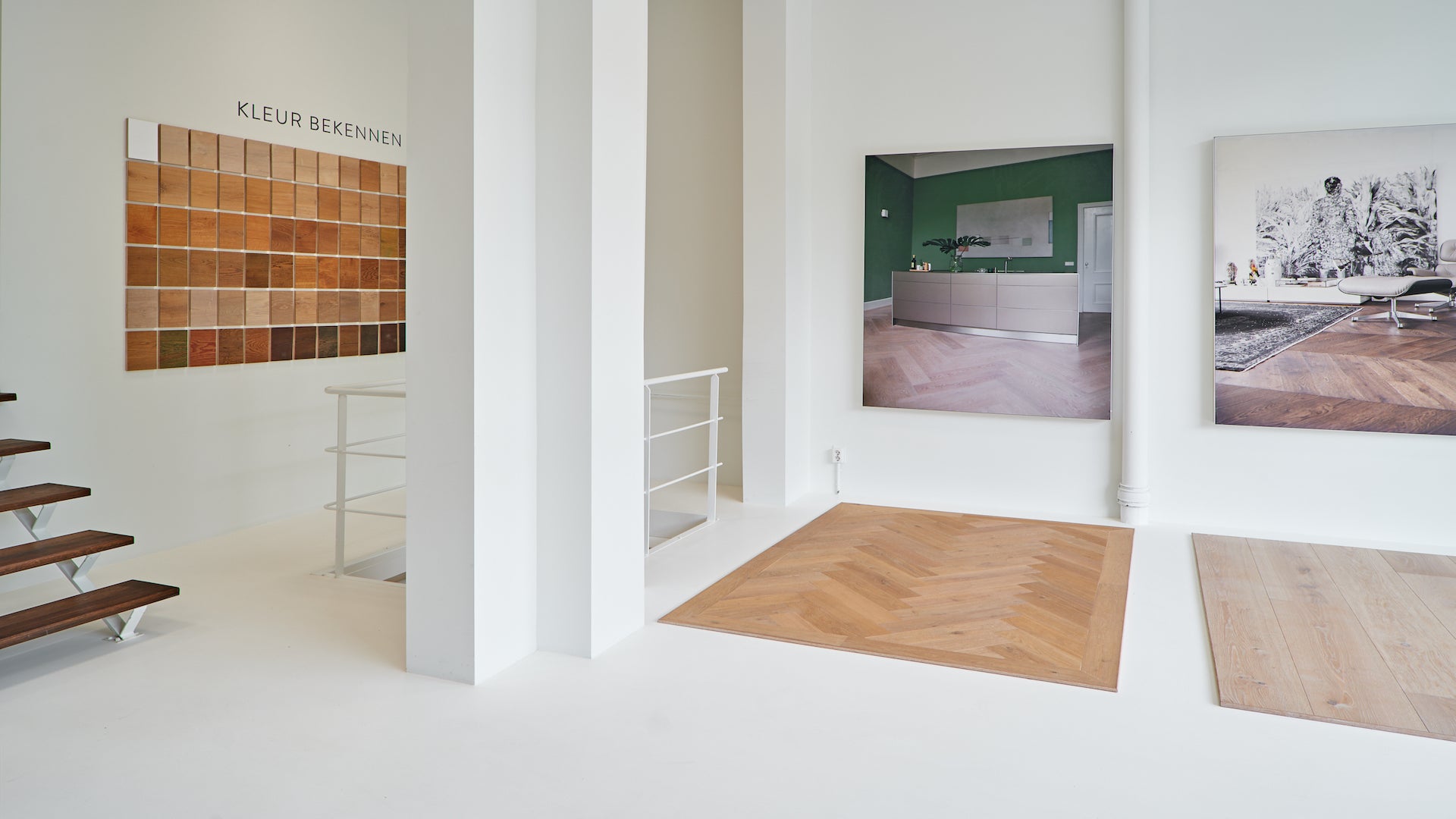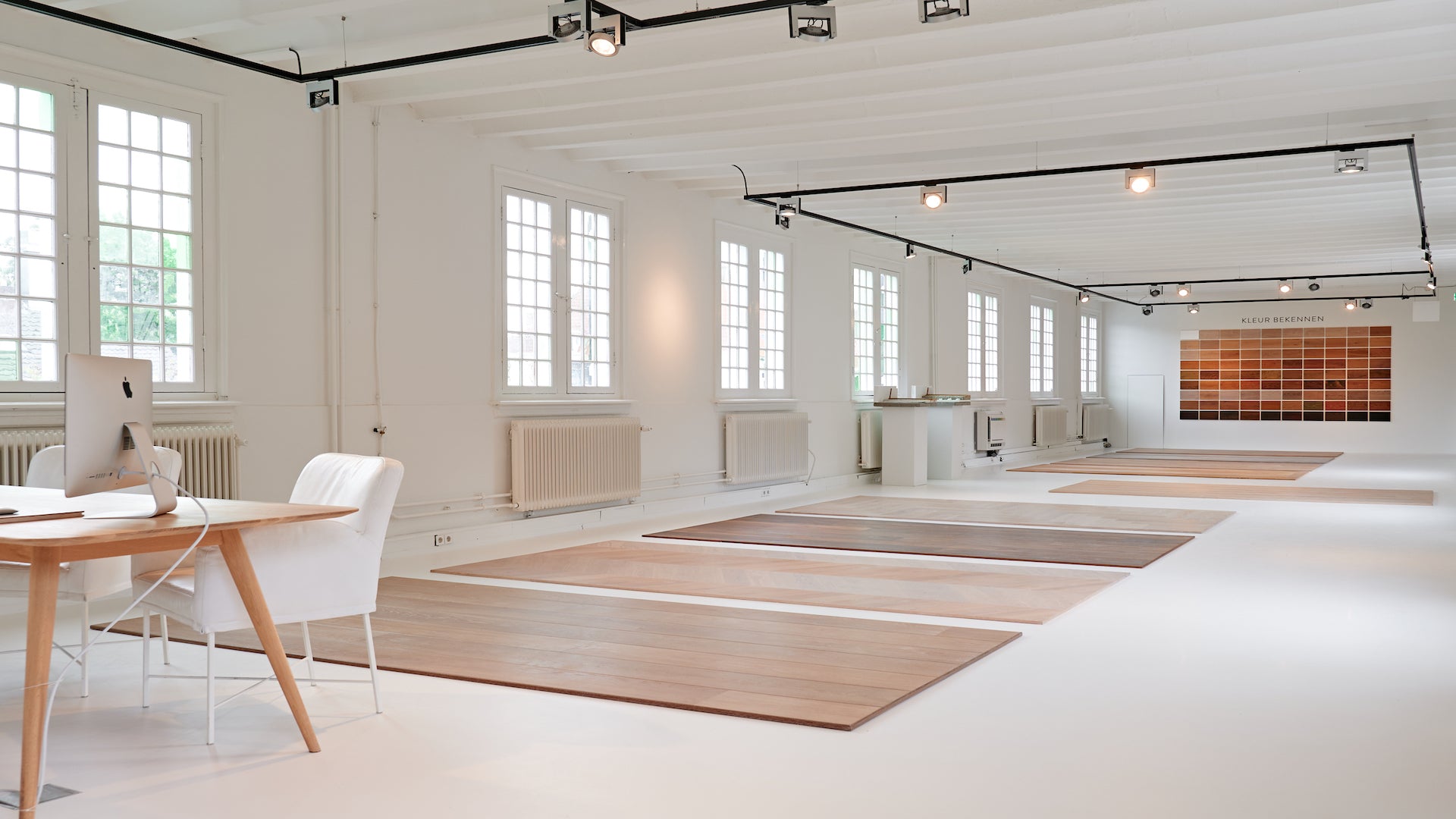ANHYDRIET GIETVLOER ALS ONDERVLOER

Bezoek de showroom
Anhydriet dekvloeren (ook wel gips gietvloeren genoemd) worden veel toegepast in nieuwbouwprojecten omdat deze soort vloeren snel aangebracht kunnen worden. Ze hoeven minder dik te zijn dan een zand/ cement vloer en met de juiste sterkte klasse bovendien ongevoelig zijn voor scheurvorming. Om een houten vloer vol te kunnen verlijmen dient de sterkte van Anhydriet van een C20-klasse te zijn.
Anhydriet vloeren worden vaak toegepast in combinatie met underfloor heating. Er wordt meestal in combinatie dan een zwevende dekvloer gecreëerd. Door de vloeibare structuur van anhydriet zorgt het voor 100% omsluiting. Zo wordt er voorkomen dat er lucht in uw ondervloer blijft, waardoor het de warmte beter geleidt. Hierdoor is een anhydrietdekvloer met underfloor heating een ideale combinatie . Een anhydriet dekvloer is hierom veelal te gebruiken in combinatie met een warmtepomp.
HUMIDITY
De poriën van een anhydrietvloer zijn nauwer dan die van een zandcementvloer. Hierdoor kan er een ophoping van vocht ontstaan. Per week droogt anhydriet ongeveer 1 centimeter dikte, de volledige droogtijd van een gemiddelde anhydrietvloer vahttps://gem-3910432.netn 6 cm dik is 6 weken.
The drying process of the anhydrite floor creates a skin layer on the floor. This skin layer locks the moisture in the screed. An anhydrite floor must be brushed open by the builder after pouring so that the moisture in the floor can evaporate.
In order to be able to glue the wooden floor, the maximum residual moisture value of the screed without underfloor heating may be 0.5% and with underfloor heating it may be a maximum of 0.3%. are. In order to measure the residual moisture content, the floor must be at least 14 days old.
FLATNESS OF THE FLOOR
Een anhydrietvloer kan door het storten tot een vlakke vloer gemaakt worden, door de vloeibare vorm is de anhydrietvloer niet geschikt om op afschot te plaatsen. Voor de installatie van de houten vloer vragen we ‘vlakheidsklasse 2’. Dit betekent dat de vloer over een lengte van 2 meter een maximaal verloop van 4 mm in hoogte mag hebben.
FLOATING OR GLUED INSTALLATION?
Op een anhydriet vloer kan een planken, Chevron pattern punt of visgraat vloer zowel zwevend als verlijmd geplaatst worden. Een patroonvloer zullen we altijd vol verlijmen op de dekvloer. Bij de zwevend geplaatste vloer zullen we een tussenvloer (dampdichte folie) plaatsen die los ligt van de dekvloer en eventuele oneffenheden kan opvangen. Hou er rekening mee dat bij een zwevend geplaatste vloer er altijd beweging merkbaar is bij het gebruik van de vloer.
When gluing, the anhydrite floor must be 'sanded open' for sufficient adhesion. The so-called stain layer will have to be sanded away. Without this pre-treatment, an anhydrite floor does not have sufficient tensile strength, resulting in an insufficient adhesive bond.
Liever thuis advies krijgen?
ANHYDRITE FLOOR WITH UNDERFLOOR HEATING
De anhydrietvloer wordt meestal toegepast met een natbouw underfloor heating systeem, dit betekent dat de underfloor heating vanaf de constructievloer wordt opgebouwd en daarover de anhydriet dekvloer wordt gestort. De totale dekking boven ingegoten leidingen van underfloor heating moet tenminste 25 mm bedragen. Verdere uitleg van het natbouwsysteem underfloor heating vind je hier.
Het is ook mogelijk om een ingefreesde underfloor heating systeem toe te passen. hierbij worden de leidingen in de anhydrietvloer gefreesd. Verdere uitleg van de infrees underfloor heating vind je hier.
POINTS TO CONSIDER FOR THE ANHYDRITE COVER FLOOR
- C20 Class due to skin tensile strength
- Residual moisture percentage of maximum 0.5% or in combination with underfloor heating 0.3%
- Drying time of approximately 1 cm per week
- The surface must be 'sanded open' before installation of the wooden floor for the correct adhesive bond.
Showrooms
Frequently Asked Questions
What is an anhydrite floor and what does it consist of?
An anhydrite floor is a screed consisting of anhydrite gypsum (calcium sulphate), sand and water. It is poured onto the construction floor and has self-leveling properties, meaning it spreads evenly and forms a smooth surface.
What are the advantages of an anhydrite floor?
Anhydrite floors offer excellent thermal conductivity, making them ideal for use in combination with underfloor heating systems.
They have self-leveling properties, making it easy to create a flat and smooth surface.
Anhydrite has good sound-absorbing properties, so it can improve the acoustics in the room.
Is an anhydrite floor suitable for all types of floor coverings?
In general, anhydrite flooring is suitable for most types of floor coverings, including carpet, laminate, vinyl, ceramic tiles and wood floors.
However, it is important to follow the manufacturer's specific recommendations and check that the anhydrite flooring is suitable for the intended type of floor covering.
How long does the drying process of an anhydrite floor take?
The drying process of an anhydrite floor can vary depending on various factors such as the thickness of the floor, humidity and ambient temperature.
In general, an anhydrite floor takes an average of one week to dry per inch of thickness, but it is important to follow the manufacturer's specific drying times before installing flooring.
Does an anhydrite floor need to be pre-treated before the floor covering is installed?
Yes, before the floor covering is installed, an anhydrite floor must first be 'sanded open'. The top layer is sanded off and must be pre-treated to improve adhesion.
This may include applying a primer or bonding coat, depending on the manufacturer's recommendations and the type of floor covering used.
It is important to follow the manufacturer's instructions and seek professional advice if necessary to ensure that the correct pre-treatment techniques are applied.


